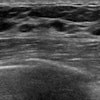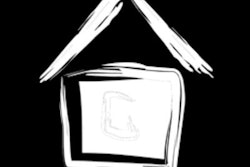
I hesitated a little bit to write this post, because I wondered: Does anyone out there really care how I do my job?
To many patients -- and some doctors -- the radiologist's work is a black box. A doctor orders an imaging study, the patient obtains said study, someone looks at it, and the ordering doctor reports the results to the patient. That "someone" in the middle is me, the radiologist. This post aims tell you a bit about how I do my job.
Here there be wizards
 Dr. Neal Klitsch.
Dr. Neal Klitsch.The first time I sat with a radiologist while he worked, I was mesmerized. To my inexperienced eyes, he zipped unbelievably fast through CT and MR images, and he seemed to merely glance at x-rays before confidently dictating his findings.
Then I began my residency training and started to evaluate studies on my own (under the supervision of a radiology attending). I would point out something I thought was abnormal, which the attending radiologist would usually dismiss, and then he would find something important that I had missed. This frustrating process repeated itself over and over in the early days of my training. I could not understand how these experienced radiologists did it. Was it sorcery?
Turns out, the secret was years of experience
In his book Outliers: The Story of Success, Malcolm Gladwell proposes that it takes roughly 10,000 hours of practice to master a skill. Most doctors hit that number in residency; I estimate my radiology training was about 12,000 hours.
Another of Gladwell's conclusions is that learning a complex skill or profession boils down almost entirely to putting the hours in to learn it. Radiology, in my opinion, follows this rule. It takes time and effort to master, but no particular unique talent that cannot be learned.
Now let's revisit a thing that frustrated me a little further on in residency training. Over a period of years, my skills improved until I could pick out nearly all important findings and dismiss others that were artifacts or normal variants. What had changed?
Well, I had reviewed thousands of imaging studies over the past few years of residency. My eyes and mind had become accustomed to quickly recognize and process these now-familiar images -- in essence, I got a lot of practice.
But practice gets you nowhere without the other key component of learning a complex skill: knowledge. After working all day, I would go home and crack open radiology textbooks for an hour or two each night. I needed this "book knowledge" to give a name to what I was seeing during the day and to understand how disease processes happened.
Come sit next to me
Below, I discuss my methods for evaluating imaging studies. Each imaging modality is listed separately, because my techniques vary among them.
Many of the methods discussed will be the same among radiologists, others will be unique to the way I was trained, and a few may be my own tweaks and quirks. Despite these differences, most radiologists will arrive at the same diagnosis for any given study. As some (serial killers?) say: There's more than one way to skin a cat.
X-ray
Most x-ray studies consist of one to three separate images of a given body part. I can usually read an x-ray fairly quickly, but that does not mean it is always easy to decide if an abnormality is present. This challenge primarily stems from the wide range of appearances of normal x-rays among patients, a fact illustrated when observing the different shapes and sizes of people around you.
For example, blood vessels in the lungs can normally vary in size and visibility on chest x-ray. I must decide whether a given patient's blood vessels are within that normal range or abnormally enlarged. Some rules of thumb can help with this decision, but in the end it often comes down to a judgment call on my part.
With this in mind, comparison studies can be the radiologist's best friend. If something on an x-ray looks a little funny, but I can see it on a prior x-ray from five years ago, I know it's either normal for that patient or a chronic condition. Remember that comparison studies also include CT, MRI, ultrasound, etc. of the body part in question.
 This car is clearly fatigued. Image courtesy of Dr. Neal Klitsch.
This car is clearly fatigued. Image courtesy of Dr. Neal Klitsch.I had to really think about my x-ray reading methods, because (not to brag) they have become second nature, kind of like driving a car. But the radiologist also needs to know in detail how the "car" works and how to identify any problems.
When I open an x-ray study, my eyes immediately begin to scan the image. If there are multiple, different views of the imaged body part, I flip back and forth through them. Certain views may be better-suited to look at, say, the heart or a particular bone, and I make sure to look carefully at those views. I examine comparison studies, if available; they are most useful to troubleshoot as described above.
One technique I use that may differ from other radiologists is to ignore the patient's history when I first look at the images. This helps me form an unbiased initial impression. Of course, the reason for the study is critical to my final interpretation, and I will read the patient's history after my initial visual inspection of the x-ray.
Although my method varies by body part, it was always stressed in my training to use the same search pattern for a given type of study to avoid missing important abnormalities. On a chest x-ray, my order of inspection is lungs, heart and mediastinum (tissues around the heart), bones, lower neck, upper arms, and upper abdomen. If there is a lateral (from the side) image of a chest, I use it to get another view of the lungs and heart and to look at the spine. Anatomic structures frequently overlap (lungs and ribs, for example), and I often have to "look through" something to see what lies beneath using my, ahem, x-ray vision.
From start to finish, the whole process takes a few minutes per x-ray.
Ultrasound
Ultrasound is unique because the radiologist only sees selected images obtained by the ultrasound technologist, rather than "unbiased" images that would show the entire area of interest. As detailed in my post about ultrasound, the technologist scans methodically and saves representative images of normal and abnormal structures, later showing them to the radiologist. More than any other imaging modality, ultrasound relies on a careful and reliable technologist who communicates effectively with the radiologist.
How does this all work? Three scenarios can occur when an ultrasound technologist scans a patient:
- Normal scan: The ultrasound technologist does not see any abnormalities to explain the patient's symptoms. In a right upper quadrant ultrasound, for example, this would mean a normal pancreas, liver, gallbladder, bile ducts, and right kidney. If experienced and comfortable with scanning, the technologist need not necessarily discuss the case with the radiologist before sending the patient home.
- Abnormal scan without questions: The technologist sees something abnormal and knows what it represents, and the case is unambiguous. Again, the technologist should be comfortable that any abnormalities have been have fully imaged.
An example would be a simple renal cyst. In my practice, this type of case would typically be shown to the radiologist before the patient leaves to ensure that no additional images are needed. However, you could argue that a straightforward abnormal case could be treated in the same way as a normal scan. If an abnormal finding is urgent, the radiologist should be shown immediately, and the result communicated to the ordering doctor to determine further management of the patient. - Abnormal scan with questions: This type of study should always be shown to the radiologist before the patient leaves the department. The radiologist will often go to the ultrasound suite to personally scan the patient and help visualize the problem. If this is not possible -- such as the radiologist is reading from a remote location -- the technologist can take short movie clips that more fully evaluate the abnormality.
Regardless of the scenario, I look through the individual ultrasound images and movie clips to evaluate normal and abnormal structures. Similar to my x-ray technique, I look at comparison studies and patient history to hone my impression and differential diagnosis.
CT
CT studies consist of hundreds and occasionally thousands of individual images. If I were to scrutinize each image the same way as an x-ray image, it would quite literally take all day to read just one CT scan. Yet, I would estimate it takes most radiologists five to 10 minutes to read a basic CT scan. In the immortal words of Arnold Drummond: "What you talkin' 'bout, radiologist?"
Hold on, Arnold, let me explain. When reading a CT, I continually scroll back and forth through individual images, only spending a fraction of a second on each one. How can I look at each image in such a small amount of time?
Two factors contribute to this speed.
Remember that a complete set of CT images represents a three-dimensional body part. As I scroll through adjacent CT slices, I create a mental 3D model of that body part from the 2D images (see my post on CT for more excruciating detail on how this works). All structures in the body are three-dimensional; therefore, most of these will appear on more than one adjacent CT image. This fact helps make abnormalities more conspicuous.
I do not look at the entire CT image at once. I like to systematically evaluate each organ before moving on to the next, so I am only focusing on a relatively small part of the CT image as I scroll up and down.
I start with the axial images, scrolling through each body part in turn. I often look through the images a second time with a different viewing window, which alters the visual contrast level in the organ of interest and permits better visualization of abnormalities.
Looking at the body from a different angle -- called reconstructions on CT -- can provide invaluable insight into an abnormality. I look from the side (sagittal) or the front (coronal), scrolling through the images in a manner analogous to my axial search pattern. CT images can also be processed to create actual (not mental) 3D models, which can be moved and rotated on the screen for another helpful perspective.
Of course, we can't forget our old friends history and comparison studies. Comparison studies can add significantly to the time needed to interpret a CT scan. For example, if a patient is being followed for cancer, the radiologist will often need to measure tumor size and compare with prior CT images to assess for any changes.
MRI
MRI is more complex and nuanced than CT, like Daniel Day-Lewis to CT's Adam Sandler.
MRI is analogous to CT in that it is cross-sectional. An MRI study consists of sequences, sets of images obtained from different angles, like the axial, sagittal, and coronal views of CT. All sequences image the same body part for a given study. MRI differs from CT in that each sequence can highlight different types of tissue by manipulating the magnetic properties of hydrogen, which is abundant in the human body in the form of fat and water. CT only measures the density -- the amount of x-rays passing through that tissue.
My analysis of MRI scans is very similar to CT scans: I scroll through the images of each sequence and create a 3D mental model of the body part. There may be many sequences to evaluate -- sometimes up to a dozen or more -- but usually only a few dozen images are in each of the sequences.
Elsewhere
The above four modalities -- x-ray, ultrasound, CT, and MRI -- constitute the majority of what I read in my daily practice. Mammography, as a screening test, is read quite differently and reported in a very standardized fashion. But, because I don't read it at my current practice, I won't discuss it here. Nuclear medicine and PET have similarities to the other modalities discussed above, so I left them out for brevity's sake.
Radiologists are creatures of habit, and that's a good thing. A routine and systematic approach helps to minimize mistakes, especially when the day is filled with procedures and other interruptions. I hope this post helps you better understand the complex and challenging process by which radiologists interpret studies.
Dr. Neal Klitsch is a board-certified radiologist with fellowship training in musculoskeletal imaging. Through his website at www.neighborhoodradiologist.com, his mission is to educate patients about radiology, shed light on the work of radiologists, and strengthen the connection between patient and radiologist. He can also be found on Twitter at @NeighborhoodRad.
Copyright © 2016 Neighborhood Radiologist



















